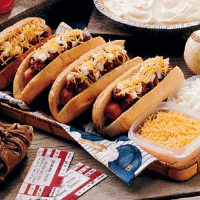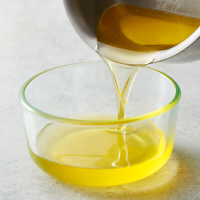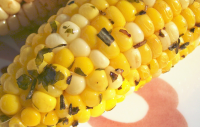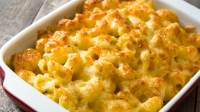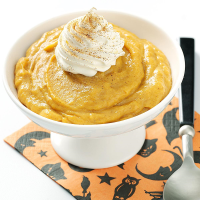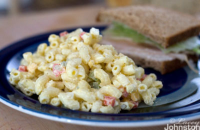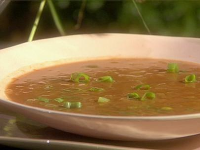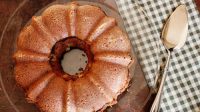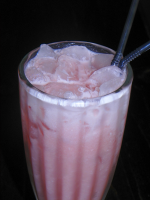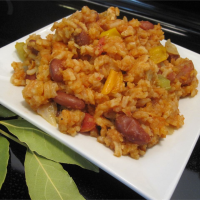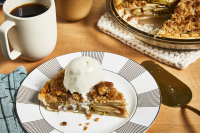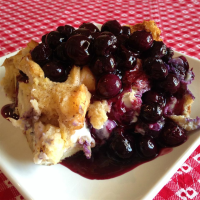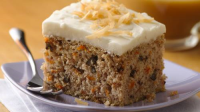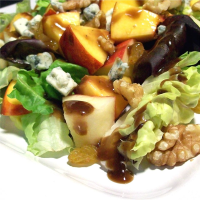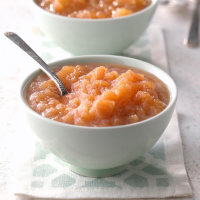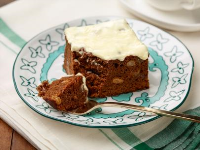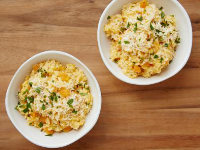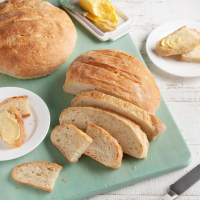HOW TO SMOKE BRISKET: TEXAS STYLE BRISKET STEP BY STEP
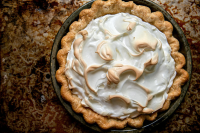
Learning how to smoke a brisket can be a very daunting task. Practice makes perfect. An informative guide like this can fast track you to a family favorite meal. Give yourself a lot of time to complete a brisket. A brisket takes 1 to 1.5hrs per pound. So give yourself 10-14hrs of cooking time.
Provided by Michael Haas
Categories Main Course
Total Time 1080 minutes
Prep Time 180 minutes
Cook Time 720 minutes
Yield 12
Number Of Ingredients 5
Steps:
- Trim the Brisket : Make sure the brisket is cold for this step. I sometimes throw the still packaged brisket in the freezer for 20 mins before I plan to start trimming. The brisket has two different sides to it. The flat (lean side) and the point (taller, fatty side). You will want to reduce the fat cap to about ¼” thickness. This helps keep the brisket moist and juicy through the smoking process. You’ll notice very hard and thick parts of fat on the point and underside. Remove most of this as you can. This fat will not render and is not the type of fat that compliments the flavors of the brisket.
- Brisket Rub : Evenly spread the rub over the brisket but don’t overdo it. You can easily put too much rub on. You can let the brisket sit on the counter up to an hour before cooking.
- Smoker Set Up: I like to run my smoker at 250 degrees F at the start. Depending on your smoker, this may take some time. Everyone has a different opinion of what wood to smoke. I typically use oak wood for my brisket but everyone has a different opinion when it comes to smoking woods. Oak provides a medium smoky flavor that is a bit lighter than Hickory. Hickory provides a sweeter finish and is great for low and slow cooks.
- Once the smoker is at temp it is ready for the brisket. Now is the time to insert your meat thermometer into the thickest part of the brisket. Make sure the probe is in the meat and not the fat. Place the brisket in the smoker with the fat cap facing up and the point facing the heat source (more important on offset smokers). The point requires more time to cook compared to the flat, so it is best to have the point closer to the heat source.
- To keep the moisture up during the cook, I put a bowl of water in with the brisket. This helps the brisket stay moist and creates a better bark because smoke likes the cool and moist areas of meat. When you're smoking brisket for a long period, keeping the smoker humid helps ensure the brisket does not dry out. Now is the time for patience. Do not constantly go back and open your smoker to inspect the brisket. Trust your meat thermometer and leave the brisket alone. Slow and consistent heat is what makes the best brisket.After 3-4 hours of smoking I start to spritz the brisket with apple cider vinegar every hour until it is time to wrap.
- After 3-4 hours of smoking, move smoker temp to 265F.
- Keep Spritzing the dry parts of the brisket every hour.
- Brisket Stall : After about 7 hours you will notice that your brisket internal temp has been sitting the same for quite some time. Probably around 160/165 degrees F. This is normal. It is called “The Stall”.The brisket is at a temperature where the fat is rendering down and creating a cooling effect on the meat. This can go on for hours depending on how much fat content is in the brisket. When this happens, the inexperienced BBQ’er starts to panic. I move the smoker to 285F to power through the stall. This will not dry out your brisket. I've done this plenty of times.
- Once the brisket has gone through the stall and the temps start to climb more rapidly and the brisket has a nice black bark finish, the next step is to wrap in the wax free butcher paper. This is the Aaron Franklin method and it seems to give the best results. Before I remove the brisket, I lay out two 4' lengths of butcher paper on a table. See picture below. I overlap the two pieces. I have started to use melted beef tallow and apply it over the butcher paper where the brisket will sit. This seems to aid in keeping the brisket extra tender and juicy. I then place the brisket on the butcher paper and wrap it very tightly. You do not want to leave large air gaps in the butcher paper because you could get a steaming effect. Take your time and wrap the brisket tight. Set the temp to 275F and we are in the final stretch of the cook.
- Re-insert the thermometer and place back in the smoker.
- Finishing the Brisket: As the temperature gets to 190 degrees, I’ll check to see if the brisket is done. I’ll take a instant read thermometer and poke into the brisket to feel how tender it is. I do not want to feel any resistance when I’m poking into the brisket. If there is still resistance, it may not be ready. Once I can poke the probe in without any resistance, I know the brisket is done. The final temperature could be 190-210. I have had briskets totally done in that large range, so you really have to poke the brisket to know if it is done. Doing a jiggle test below demonstrates when a brisket is done. If you tap the brisket it should jiggle just like the video below.You can also pick up the brisket and use your fingers to see how soft it is. If it feels extremely tender and soft, it is probably done.
- On average I find the briskets are done around 205F but this can differ from one brisket to the next.
- Resting the Brisket: I've changed this step dramatically over the years and I think I have it mastered. I simply leave it wrapped sitting on a counter with a towel over top for about 2 hours or until the internal temp hits 150F. Once it hits this temperature, you can either put it in a warmed cooler or I put it in an oven that can maintain a keep warm temperature of 150F. You can rest your brisket for hours as long as the internal temperature does not drop below 140F. I typically let me brisket rest a minimum of 2-3 hours. The longer the better. As the brisket rests, it reabsorbs the moisture and juices making a much juicier meal.
- Cutting the Brisket : I start by cutting the flat. You want to cut about 1/4" thick slices. It is important to cut across the grain of the meat. Once you have cut about half way up the brisket, you will notice another line of fat in your slices. This is where the point meets the flat. You want to stop at this point. You will want to cut the point in half, perpendicular to the slices of the flat. One half of the point will consist of good meat and the other will consist of a lot of fatty meat. It isn't hard to identify. Cut the good side of the point in 1/4"-1/3" slices again. Remove any remaining large fat layers before serving.
- Serve Immediately!
Nutrition Facts : ServingSize 0.5 lbs, Calories 596 kcal, CarbohydrateContent 2 g, ProteinContent 79 g, FatContent 28 g, SaturatedFatContent 10 g, CholesterolContent 234 mg, SodiumContent 300 mg, FiberContent 1 g, SugarContent 1 g, UnsaturatedFatContent 14 g
HOW TO SMOKE BRISKET: TEXAS STYLE BRISKET STEP BY STEP

Learning how to smoke a brisket can be a very daunting task. Practice makes perfect. An informative guide like this can fast track you to a family favorite meal. Give yourself a lot of time to complete a brisket. A brisket takes 1 to 1.5hrs per pound. So give yourself 10-14hrs of cooking time.
Provided by Michael Haas
Categories Main Course
Total Time 1080 minutes
Prep Time 180 minutes
Cook Time 720 minutes
Yield 12
Number Of Ingredients 5
Steps:
- Trim the Brisket : Make sure the brisket is cold for this step. I sometimes throw the still packaged brisket in the freezer for 20 mins before I plan to start trimming. The brisket has two different sides to it. The flat (lean side) and the point (taller, fatty side). You will want to reduce the fat cap to about ¼” thickness. This helps keep the brisket moist and juicy through the smoking process. You’ll notice very hard and thick parts of fat on the point and underside. Remove most of this as you can. This fat will not render and is not the type of fat that compliments the flavors of the brisket.
- Brisket Rub : Evenly spread the rub over the brisket but don’t overdo it. You can easily put too much rub on. You can let the brisket sit on the counter up to an hour before cooking.
- Smoker Set Up: I like to run my smoker at 250 degrees F at the start. Depending on your smoker, this may take some time. Everyone has a different opinion of what wood to smoke. I typically use oak wood for my brisket but everyone has a different opinion when it comes to smoking woods. Oak provides a medium smoky flavor that is a bit lighter than Hickory. Hickory provides a sweeter finish and is great for low and slow cooks.
- Once the smoker is at temp it is ready for the brisket. Now is the time to insert your meat thermometer into the thickest part of the brisket. Make sure the probe is in the meat and not the fat. Place the brisket in the smoker with the fat cap facing up and the point facing the heat source (more important on offset smokers). The point requires more time to cook compared to the flat, so it is best to have the point closer to the heat source.
- To keep the moisture up during the cook, I put a bowl of water in with the brisket. This helps the brisket stay moist and creates a better bark because smoke likes the cool and moist areas of meat. When you're smoking brisket for a long period, keeping the smoker humid helps ensure the brisket does not dry out. Now is the time for patience. Do not constantly go back and open your smoker to inspect the brisket. Trust your meat thermometer and leave the brisket alone. Slow and consistent heat is what makes the best brisket.After 3-4 hours of smoking I start to spritz the brisket with apple cider vinegar every hour until it is time to wrap.
- After 3-4 hours of smoking, move smoker temp to 265F.
- Keep Spritzing the dry parts of the brisket every hour.
- Brisket Stall : After about 7 hours you will notice that your brisket internal temp has been sitting the same for quite some time. Probably around 160/165 degrees F. This is normal. It is called “The Stall”.The brisket is at a temperature where the fat is rendering down and creating a cooling effect on the meat. This can go on for hours depending on how much fat content is in the brisket. When this happens, the inexperienced BBQ’er starts to panic. I move the smoker to 285F to power through the stall. This will not dry out your brisket. I've done this plenty of times.
- Once the brisket has gone through the stall and the temps start to climb more rapidly and the brisket has a nice black bark finish, the next step is to wrap in the wax free butcher paper. This is the Aaron Franklin method and it seems to give the best results. Before I remove the brisket, I lay out two 4' lengths of butcher paper on a table. See picture below. I overlap the two pieces. I have started to use melted beef tallow and apply it over the butcher paper where the brisket will sit. This seems to aid in keeping the brisket extra tender and juicy. I then place the brisket on the butcher paper and wrap it very tightly. You do not want to leave large air gaps in the butcher paper because you could get a steaming effect. Take your time and wrap the brisket tight. Set the temp to 275F and we are in the final stretch of the cook.
- Re-insert the thermometer and place back in the smoker.
- Finishing the Brisket: As the temperature gets to 190 degrees, I’ll check to see if the brisket is done. I’ll take a instant read thermometer and poke into the brisket to feel how tender it is. I do not want to feel any resistance when I’m poking into the brisket. If there is still resistance, it may not be ready. Once I can poke the probe in without any resistance, I know the brisket is done. The final temperature could be 190-210. I have had briskets totally done in that large range, so you really have to poke the brisket to know if it is done. Doing a jiggle test below demonstrates when a brisket is done. If you tap the brisket it should jiggle just like the video below.You can also pick up the brisket and use your fingers to see how soft it is. If it feels extremely tender and soft, it is probably done.
- On average I find the briskets are done around 205F but this can differ from one brisket to the next.
- Resting the Brisket: I've changed this step dramatically over the years and I think I have it mastered. I simply leave it wrapped sitting on a counter with a towel over top for about 2 hours or until the internal temp hits 150F. Once it hits this temperature, you can either put it in a warmed cooler or I put it in an oven that can maintain a keep warm temperature of 150F. You can rest your brisket for hours as long as the internal temperature does not drop below 140F. I typically let me brisket rest a minimum of 2-3 hours. The longer the better. As the brisket rests, it reabsorbs the moisture and juices making a much juicier meal.
- Cutting the Brisket : I start by cutting the flat. You want to cut about 1/4" thick slices. It is important to cut across the grain of the meat. Once you have cut about half way up the brisket, you will notice another line of fat in your slices. This is where the point meets the flat. You want to stop at this point. You will want to cut the point in half, perpendicular to the slices of the flat. One half of the point will consist of good meat and the other will consist of a lot of fatty meat. It isn't hard to identify. Cut the good side of the point in 1/4"-1/3" slices again. Remove any remaining large fat layers before serving.
- Serve Immediately!
Nutrition Facts : ServingSize 0.5 lbs, Calories 596 kcal, CarbohydrateContent 2 g, ProteinContent 79 g, FatContent 28 g, SaturatedFatContent 10 g, CholesterolContent 234 mg, SodiumContent 300 mg, FiberContent 1 g, SugarContent 1 g, UnsaturatedFatContent 14 g
HOW TO SMOKE A BRISKET IN AN ELECTRIC SMOKER (5 EASY STEPS)
From carnivorestyle.com
EXPERT TESTED: THE 8 BEST SMOKERS UNDER $400 IN 2022
From thespruceeats.com
HOW TO SMOKE A BRISKET IN AN ELECTRIC SMOKER (5 EASY STEPS)
From carnivorestyle.com
HOW TO SMOKE A BRISKET IN A MASTERBUILT SMOKER - PIONEER ...
From pioneersmokehouses.com
HOW TO PREPARE SMOKED ROAST BEEF IN AN ELECTRIC SMOKER
From pioneersmokehouses.com
TEXAS STYLE SMOKED BEEF BRISKET RECIPE - SALT PEPPER SKILLET
From saltpepperskillet.com
EASY SMOKER RECIPES YOU'LL LOVE - THE TYPICAL MOM
From temeculablogs.com














